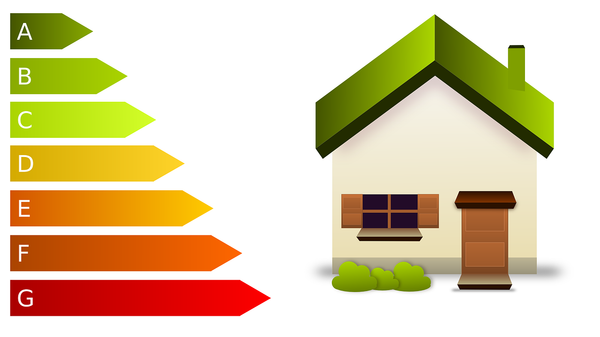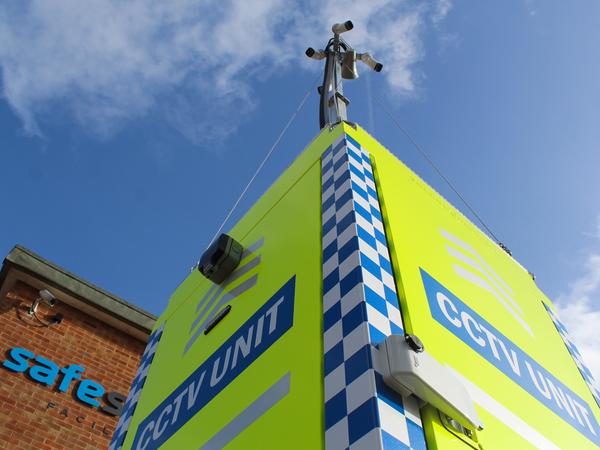Subscribe to our newsletter
Sign up for the latest news & offers from SafeSite
Quick and competitive quotes. Nationwide coverage
Quick quotes. Nationwide coverage

How can construction be more sustainable?
It is reported that the built environment and construction sector accounts for almost 40% of global carbon emissions.
The UK construction industry has a key role to play in mitigating these effects to meet the Prime Minister’s 2050 Net Zero target and defining a more sustainable future for the sector.
Achieving net zero in the UK construction sector
The UK government’s Net Zero Strategy: Build Back Greener report was published ahead of COP26, setting out the “policies and proposals for decarbonising all sectors of the UK economy to meet [our] net zero target by 2050”.
At the same time the government also published its Heat and Buildings strategy, as part of achieving this target.
There is already a lot of positive action underway towards ‘greening’ the UK construction sector. Some examples include:

Sustainable construction in practice
In the UK, members of The Scottish Federation of Housing Associations (SFHA) are working to tackle climate change by building homes using more energy efficient methods and using off-site construction. The Scottish Government has set an ambitious target that by 2045 over two million homes must switch to low emission heating systems.
SFHA members are also helping their tenants make their homes more energy efficient, which has the dual benefit of positively impacting the planet and reducing fuel poverty.
At grass roots level, projects such as food sharing, tree planting, and electric vehicle charging points and car clubs are involving communities in wider environmental projects.
One development using more sustainable construction methods is Hillcrest Homes’ waterfront modular development at Dundee’s Victoria Dock. This £13 million development of 119 waterfront apartments is using sustainable construction methods to make a more positive impact on the planet.
A new system of off-site construction is seeing individual pods being formed from steel, pre-fitted and then transported to site where they are joined together to create the apartment block.
The environmental benefits being realised as result is reduced material wastage and lower material emissions as everything is being put together in one location. The properties themselves will boast a range of energy-efficiency measures such as smart meters and high-specification cladding and insulation. Completion is expected in early 2023.
Promoting sustainable construction materials
Overseas, Laudes Foundation has established a multi-million Euro grant-making fund – Built by Nature – that aims to fully decarbonise construction, using sustainably-sourced timber as the core building material. Milan and Madrid are two cities piloting this innovation, which is reducing the amount of steel and concrete – and associated building emissions – by almost a third. It is hoped that these projects will pave the way for other cities to adopt more sustainable construction practices.
Elsewhere, the British Embassy is supporting the Guatemala Green Building Council (GGBC) to fight climate change through a series of virtual workshops (#BuildingToCOP26). The workshops aim to start a conversation about sustainable construction that leads to positive action by those in the construction sector in Guatemala.

Examples of local projects include a prototype farm growing different species of commercial-grade bamboo to assess their suitability as construction materials i.e. for roof sheets, cladding and flooring.
Bamboo grows very quickly and is stable in hot climates, making it a more sustainable material than other types of timber sources.
Similar projects, looking at the viability of bamboo as a building material are also ongoing in Tanzania where it is being used to build furniture, doors and shades. It is hoped these projects will encourage the use of bamboo in future construction projects.
What are the challenges and benefits of sustainable construction?
The environmental case for green, healthy buildings is clear in the fight against climate change.
However, there is a perception that sustainable construction is expensive, which can make it seem like a less viable or attractive option.
The World Green Building Council (World GBC), a global network of organisations with a common aim to improve sustainability within the construction industry, launched its report ‘Beyond the Business Case’ at COP26 in Glasgow. The report outlines the financial and social value of investing in a more sustainable built environment.
Cristina Gamboa, CEO, World GBC, said: “Our report inspires urgency — but urgency with optimism. There should be total clarity on why no business can afford not to embrace sustainability.”
Although the World GBC’s report shows that cost remains a concern, owners of green buildings can testify that money can be saved through reduced operating costs due to sustainable materials being used. Building more sustainably also provides resilience to future legislative changes and mitigates against any potential reputational risks.
The social benefits of green builds are widespread, helping to improve the health, wellbeing and productivity of the site operatives that construct them and the occupants. Ultimately, sustainable buildings are often considered more valuable than traditional ones, due to their energy-efficient performance and desirability.
What to look for in a sustainable construction partner
There are many ways companies working in the construction sector can reduce their carbon footprint and improve the sustainability of their business operations. These include:
ISO 14001 certification
ISO 14001 is an Environmental Management standard that demonstrates an organisation’s commitment to reducing waste and protecting the environment. ISO 14001 certification also helps companies use their resources more efficiently i.e. the materials it uses in construction.
Materials
Wood is a natural resource that doesn’t require a great deal of energy to be used in construction. At SafeSite Facilities all of our timber hoarding is made from sustainable wood sources, and we work with local recycling schemes, such as the Bristol Wood Recycling Project, so it can be reused once it is no longer required on site.
Our concrete and water filled barriers are manufactured from recycled materials here in the UK.
Environmentally-friendly solar-powered options are available on our rapid deployment mobile CCTV towers, which are popular on sites that have no access to mains power. The state-of-the-art photovoltaic modules in each unit are ultra-efficient providing a back-up source of mains-free power around the clock.

Made from 100% recycled material, our reusable UPVC Hoarding marks a step change to more sustainable site hoarding options. Recyclable and reusable, the design echoes the benefits of traditional timber hoarding whilst also providing an eco-friendly and durable solution.
Waste
Our clearance and cleaning teams are experienced in clearing all types of waste from event sites and vacant properties, including food waste, hazardous waste and human waste. This is then disposed of responsibly, and in line with ISO 4001 standards, to ensure there is no harm to the environment.
Emissions
With installation teams frequently travelling to and from our customers’ sites, we use vehicles that limit journeys and reduce harmful emissions. Our new Iveco flatbed lorry enables a team of three to travel in one vehicle and is compliant with Euro VI Heavy Duty emission standards. We are also exploring options to transition our fleet to electric vehicles in the future, to further reduce our carbon footprint.
When you select SafeSite Facilities, you’re choosing a partner that is committed to considerate construction. To find out more about our sustainable safety solutions fill out the contact form and a member of our team will be in touch shortly.
We respond in under 30 mins on average (excl. weekends)